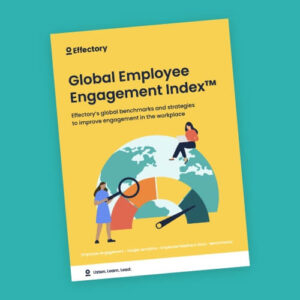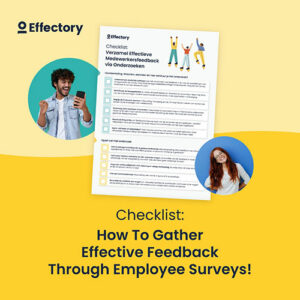How can you effectively communicate how employee engagement and engaged employees work, and what it means for your organisation? We’ve found one of the easiest ways to explain engagement is by using a cart as a metaphor.
A simple metaphor for employee engagement

Employee engagement and engaged employees have increasingly become to be seen as one the cruxes of successful organisations. Those employees that are engaged are often innovative, creative and customer oriented. Their aim is to help the organisation move forward and they are people that you both want on your payroll, and want to retain.
Whilst the benefits of engaged employees may be fairly simple to outline, explaining how engagement works and what it means for your organisation can sometimes be more difficult.
Europe’s top 5 countries for employee engagement and commitment
What’s the difference between engagement and commitment?
At Effectory International, we’re often asked to explain the difference between employee engagement and employee commitment. Engagement is an intrinsic attitude that denotes an employee’s enthusiasm for his or her job. Commitment, on the other hand, denotes an employee’s enthusiasm for the company he or she works for.
To provide insight into the level of engagement and commitment within an organisation, we categorise employees into four types: engaged and committed, engaged, committed and neither engaged nor committed. The four types differ in the following way:
- Engaged and committed employees are both engaged in their work and committed to the organisation. Employees love their work and the company they work for.
- Engaged employees are engaged in their work, but not committed to the organisation.
- Committed employees are committed to the organisation, but not engaged in their work.
- Employees that are neither engaged nor committed are neither engaged in their work, nor committed to the organisation.
We believe that the best case scenario is when an employee is engaged in the job and committed to the organisation. If an employee is only engaged, there is the distinct risk that they are not committed to the organisation, and vice versa.
What happens when employees are neither engaged nor committed?
Global Employee Engagement Index™
Discover the Global Employee Engagement Index™ 2025 for key insights on driving employee engagement, improving performance, and enhancing team dynamics.
DownloadThe cart as a metaphor for engagement
Our experience has taught us that employee engagement can sometimes be challenging. We have found that the following metaphor can often help:
Imagine that your organisation is a cart, and that as a cart, it has to move forward to get to its destination. In and around the cart sit your employees, and generally speaking we can split the employees into three broad categories: engaged and committed, engaged or committed and neither engaged nor committed.
At the front of the cart are the engaged and committed employees. They are the people in your organisation that walk in front of the cart, and help pull the cart along its journey. Slightly further back are the engaged or committed employees, who sit in the cart and look forward. At the other end of the cart are the employees that are neither engaged nor committed. The majority of these employees are looking the other way, ignoring the direction of the cart. Some are however, hanging off the back, disrupting the journey and making it more difficult.
Front runners
It’s sometimes easy to assume that managers are the employees walking in front of the cart, pulling it along. However, it’s important to realise that engagement and commitment occurs at every level within the organisation, and any employee, whether manager or not, can love his/her job and company, and thus pull the cart forwards.
What’s most important for your organisation is that the overall balance of the cart favours those towards the front end. In addition to those engaged and committed employees, the employees that are engaged or committed also play a vital role in helping the cart move forward and certainly contribute to organisations. It’s vital for organisations that the cart keeps moving forward, and that those employees at the back are not causing the cart to come to a standstill
Dangers
The dangers to your engaged and committed employees are the hidden obstacles that are encountered along the journey. Engaged and committed employees who are at the front of the cart inevitably encounter bumps along the way, and the danger comes when these bumps become frustrations. For example, excessive bureaucracy and procedures can become obstacles to engaged and committed employees. Perhaps a lack of resources is hindering and limiting the employees at the front of the cart.
In general, obstacles are perfectly normal. The trick is to use the energy of engaged and committed employees to sufficiently clear the obstacle so the cart can keep moving. If it becomes clear that the task of moving the obstacle is proving too hard for the employee, it is essential that the job is passed onto someone else. When employees are stuck with a frustrating task for too long, there runs the risk that they can go from leading the cart along its journey, to disrupting the journey.
Employee engagement and commitment is on the rise
The ideal situation
For organisations, the ideal arises when there are enough engaged and committed employees pulling the cart forward, and enough engaged or committed employees sit in the cart. Both the engaged or committed, and engaged and committed employees can offer each other support, and interchange positions. In a perfect scenario there would be no employees blocking the progress of the cart. The reality is however often different, but at the very least, organisations should ensure that the balance of employees favours the front of the cart.
Remain alert to any bumps in your journey, or possible obstacles for your employees. One of the most important things is to ensure that the bumps do not become immovable frustrations. Such frustrations are not only potentially bad for your engaged and committed employees, but also for your organisational journey.
How to gather feedback from your employees
The definitive checklist for creating your employee engagement survey.
Download
